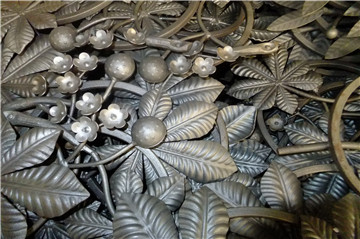What makes wrought iron?
Views: 621 Update date: Dec 07,2023
Wrought iron is an iron alloy with a very low carbon content (typically less than 0.08%). It is known for its toughness, malleability, and distinctive fibrous appearance. Wrought iron is produced through a process that involves refining iron ore into iron and then further processing it to reduce its carbon content.
Here is a basic overview of the process:
Extraction of Iron Ore: Iron ore, typically in the form of iron oxides such as hematite (Fe2O3) or magnetite (Fe3O4), is extracted from the earth.
Smelting: The extracted iron ore is smelted in a blast furnace. During this process, the iron ore is heated with a carbon source, usually coke (a form of carbon derived from coal). The carbon reacts with the oxygen in the iron ore to produce molten iron and carbon dioxide. However, not all of the carbon is used up in this reaction.

Puddling: The molten iron produced in the blast furnace is then transferred to a puddling furnace. Puddling involves stirring the molten iron with iron rods and adding oxidizing agents to remove excess carbon. This process helps reduce the carbon content of the iron.
Wrought Iron Formation: The result of puddling is a malleable mass of iron known as wrought iron. The repeated stirring and exposure to oxidizing agents help remove impurities and excess carbon, leaving behind a fibrous and tough material.
Wrought iron has been historically used for various purposes, including the production of tools, weapons, and decorative items. However, its use has declined over time with the advent of other materials and manufacturing processes.
Prev News: SIMEN METAL GATE AND FENCE WELDING
Next News: Why is wrought iron so expensive?
